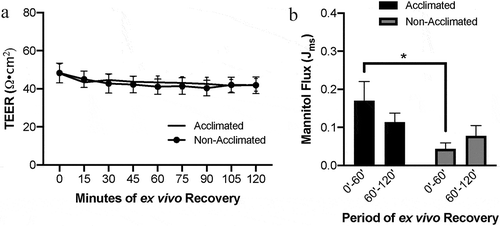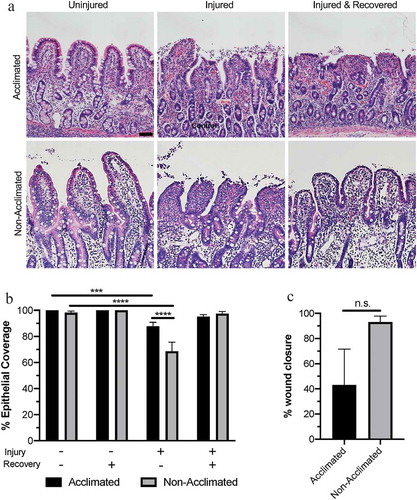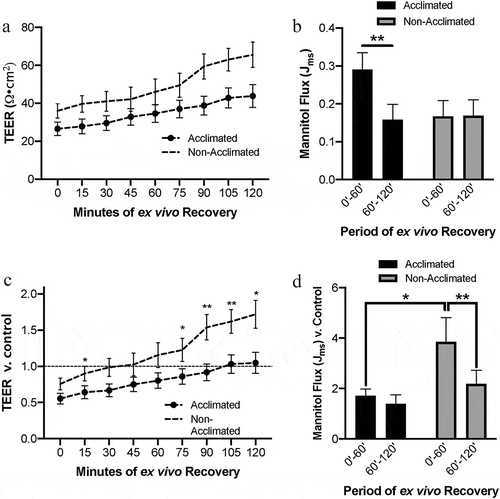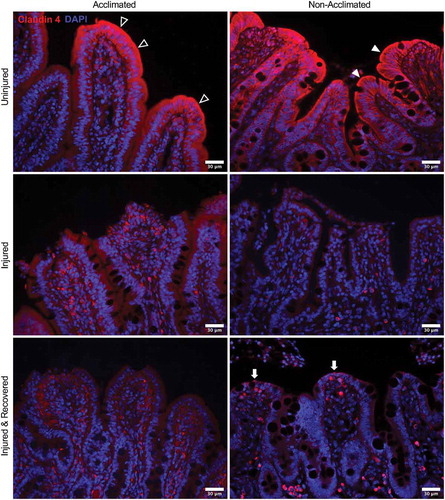Figures & data
Figure 1. Effects of animal handling practices on baseline barrier function in uninjured small intestinal mucosa

Figure 2. Combined effects of animal handing practices and acute ischemic injury on microscopic mucosal integrity in the small intestine

Figure 3. Combined effects of animal handing practices and acute ischemic injury on small intestinal barrier function

Figure 4. Combined effects of animal handing practices and acute ischemic injury on expression and localization of tight junction protein claudin-4 in the small intestinal mucosa

